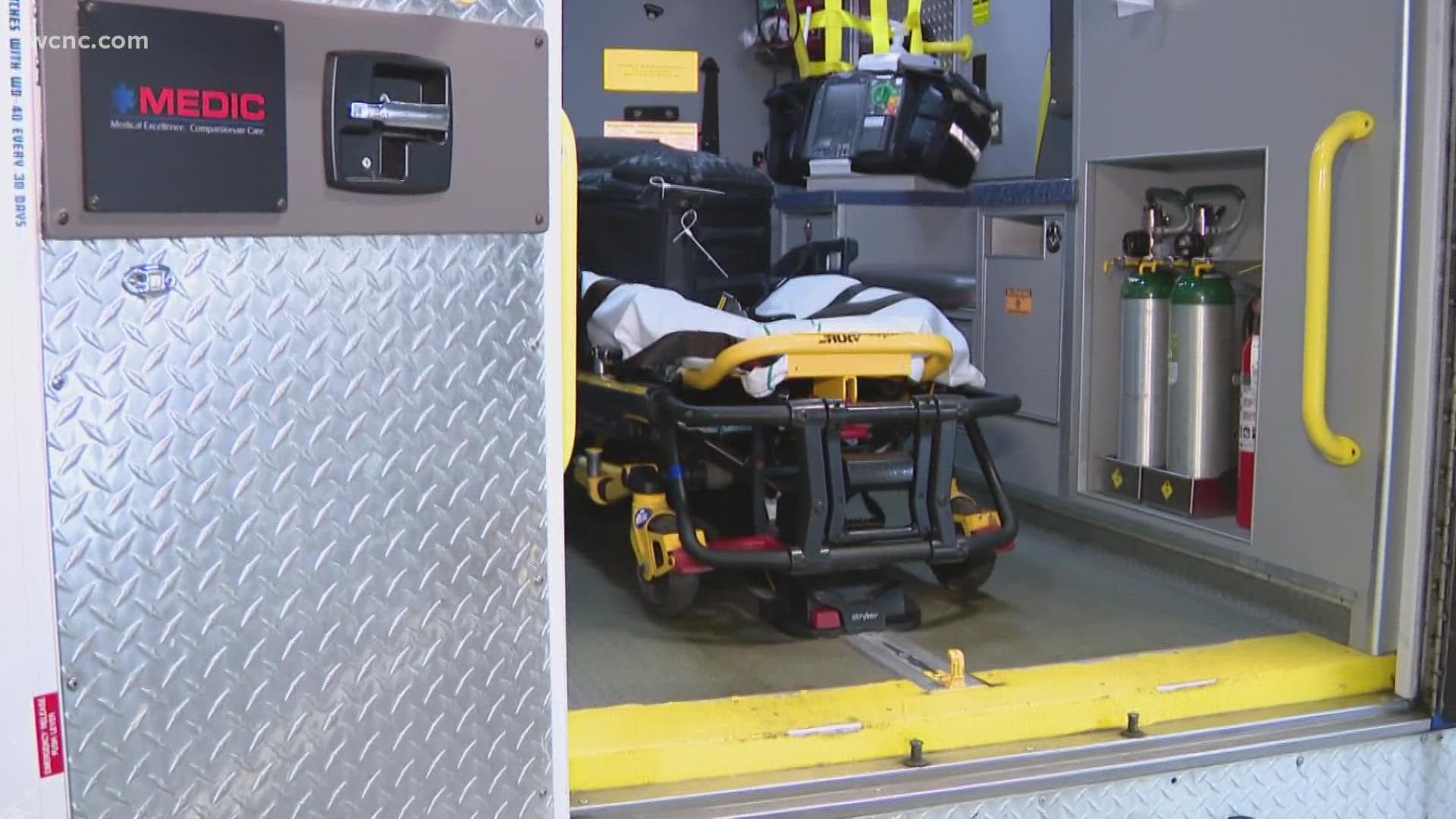CHARLOTTE, N.C. — The largest EMS agency in North Carolina, Medic, said it is making changes on how it responds to 911 calls in Mecklenburg County as it looks to hire more staff.
Mecklenburg Medic said it's getting a record number of calls on top of a staffing shortage. John Studnek, the deputy director of Mecklenburg EMS said they’ve managed to stay on top of their response times thus far, but the workers they do have are working mandatory overtime.
Studnek said responding to every single call with an ambulance as they’ve been doing isn’t sustainable.
“The response and transport volume remains highly volatile,” Studnek said.
Studnek said the nationwide healthcare provider shortage that's left them short-staffed isn't helping.
“It left us short about 38 patient-facing full-time employees," Studnek said.
Studnek said the employees they do have are working tirelessly to keep up with the call volume.
“We do have mandatory overtime in place for October, and we will be instituting mandatory overtime again in November,” Studnek said.
Though roughly 97% of their employees are vaccinated or exempt, Medic could lose the remainder to the vaccine mandate.
“We have folks that have one more day, and that’s maybe 10 employees,” Studnek said.
To help ease the workload, Studnek says they’ll now only immediately send Medic ambulances to high acuity callers, meaning those with life-threatening emergencies.
“I’m having chest pains, I'm having difficulty breathing, I'm having signs and symptoms of a stroke, a major traumatic incident,” Studnek said. "Those types of calls we must respond to."
To ensure they have the resources, Studnek said Medic won't immediately send ambulances to low acuity callers or callers with minor non-life-threatening issues. Instead, firefighter EMTs will immediately respond, with Medic arriving within 30 minutes.
“This is one of the steps we’re taking to reduce the burden on our mandatory overtime employees,” Studnek said.
Studnek said after looking at a number of low acuity cases, though, they realized not everyone needed the ambulance when they showed up.
“Only 1-1.5% of patients required potentially life-saving intervention," Studnek said.
Studnek said they're now asking for people with non-life-threatening calls to find an alternative.
“We would prefer low acuity patients talk to a physician, go to an urgent care," Studnek said.
But Studnek recognizes there are some who can’t get there.
“They don’t have transportation, they don’t have a car, they don’t have access to a bus line," Studnek said. "And we would send the only resource we had which is an ambulance.”
Studnek said thanks to a new partnership, EMS can now offer low acuity patients a Lyft to a medical center at a fraction of the cost.
“The average charge for an ambulance is just at or over $1000," Studnek said. "In our experience with Lyft right now is somewhere around $18.”
Studnek said you don’t need an app to use this Lyft service, it can be done via text or on a landline -- the patient just has to agree to it. If they don’t, Studnek says they will still send an ambulance to those who prefer that.
Contact Lana Harris at lharris@wcnc.com and follow her on Facebook, Twitter and on Instagram

